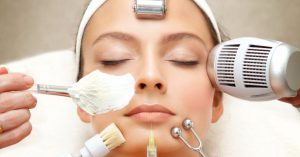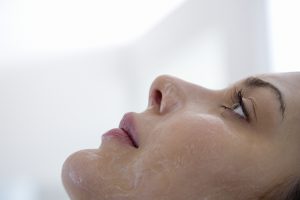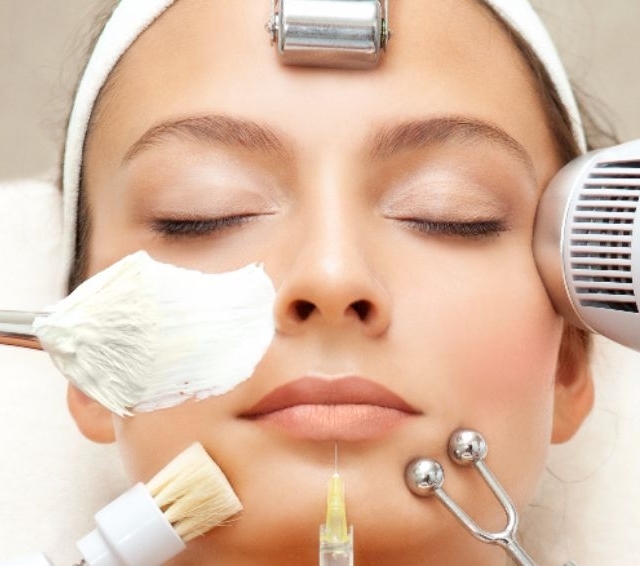
For years we’ve been carefully analysing what we put into our bodies. Kale smoothies, Buddha bowls, skin refining probiotics – the clean eating trend is rivaling Christianity for the most followed religion.
Despite the fascination with what we put into our bodies, what we put on them seems to have slipped our mind. People still strip, burn and graze their skin all in the name of beauty yet can’t see the irony in their actions.
“Inflammation that is internally caused by eating and drinking unhealthily isn’t any different to stripping your skin and causing inflammation with aggressive ingredients,” says Sue Dann, Omniderm’s National Training Manager and Dr Spiller’s skincare expert.
“People forget that the skin is an organ, the largest organ of the body. Yet we treat it like it is unimportant. Dehydration and sensitivity are the two major conditions that women say they would change.”
“Why are these conditions there in the first place? Not because people aren’t drinking enough water, that’s for sure. The conditions exist because of aggressive products and treatments, used in the name of modern anti-ageing.”
If you want to look younger, all you have to do is burn your skin, fry it a bit with a laser, give it a good rub, peel it right off, pump it full chemicals, paralyse the muscles and then inject it with neurotoxins. Oh, and don’t forget the broccoli smoothie!
The skincare industry has been telling consumers for years that the key to anti-ageing is to constantly injure your skin with ‘non-invasive’ treatments to incite a wound healing response to kick start cell renewal.
Wound. Healing. Response.

“Wounded skin is scientifically proven to only recover by 85 to 90 percent. It never goes back to 100 percent,” Ben Johnson, manager of Evergreen-based skin care line Osmosis Pur Medical Skincare, tells Colorado newspaper Daily Camera.
“And the idea that if you wound it and it goes back to 110 percent is ludicrous, by scientific standards.”
Johnson started his line after realising the beauty industry’s obsession with traumatising skin. While he admitted that you can see an increase of collagen after a laser treatment, the artificial tightening effect fades and many people.
He told Camera Daily that instead of creating an injury, his line focuses on slowing down the ageing process by feeding and nourishing the skin rather that exfoliating and renewing.
Another company that’s taken into consideration the link between wellness and skin health is Dr Spiller. Since the 1950s, the German brand has taken a biomimetic approach when studying the skin, endeavouring to work with it and not damage it in any way.
“Scientists are now generally accepting that there is a need to shift shift from ‘upregulation’ of skin functions to ‘support and maintenance’ of the skin’s natural processes,” Paul Fister, Managing Director of OmniDerm Australia, tells Professional Beauty.
“Nicholas Perricone MD, Dr. Ben Johnson, Mark Lees Ph.D have written that inflammation caused by aggressive ingredients leads to the formation of ‘self-destruct’ enzymes such as collagenase, elastase and hyaluronidase which destroy collagen, elastin and hyaluronic acid respectively.”
“Dr. Spiller‘s approach was to study the skin’s structure and functions carefully, and then to produce skin care products that recreate the conditions found in young, healthy skin as closely as possible. His aim was to protect the skin so it can do what it does best – work at maintaining homeostasis. Active ingredients are chosen with this in mind. That’s what we call a ‘biomimetic’ approach.”

According to Sue Dann, wellness is an approach to health that supports the idea of preventing illness as opposed to treating it. Beauty is often said to come from within, amd the two are irrevocably linked, so it’s only logical that wellness in beauty really is about balance and working with your body to create your own inner and outer beauty.
One brand that focuses on creating beauty from the inside out is Australian skincare company Qsilica. With a line of products that contain natural colloidal silica, this Australian brand champions its chemical-free formulas and ethically sourced ingredients.
“The beauty industry is seeing a rise of consumers looking to plant based ingredients, for products that work from within and that support health and beauty in a way that is healthy, and with less chemicals,” Planet Health’s Brand Communications Manager Shelley Atkin tells Professional Beauty.
“Paired with an understanding that prevention is better than cure, future generations are likely to take a more holistic view of their health and beauty as a foundation for the results their after.”
It’s hard to argue with this gentle handed, and arguably more reasonable, approach to beauty.
“Skin can be healed in a more thorough and profound way with dermal nutrients, hydration and barrier restoration,” skincare specialist Danny Neifert told Daily Camera in a 2016 interview.
“Chemical peels, retinol creams and trauma-based procedures are obsolete. And sadly, this is currently 100 percent of the medical industry standard.”
“The irony is not only are those things not helping, but those procedures and products are causing aging and causing acne,” she says.
“It’s so absurd…If consumers were educated, they would be demanding different things. My goal is to educate people.”
Related
- Salons can Now Serve Alcohol Without a Liquor License
- How to Start a Salon in a Regional Area
- Well Known Sydney Beauty College goes into Administration
One thought on “Why are we knowingly harming our client’s skin?”
Leave a Reply
You must be logged in to post a comment.


I’ve been trying to share this news with friends and family. There are also many xenoestrogenic ingredients in the cosmetics that are throwing off the hormonal balance of women’s bodies. Thank you for posting this information. I will share it around and hope it causes some to think.